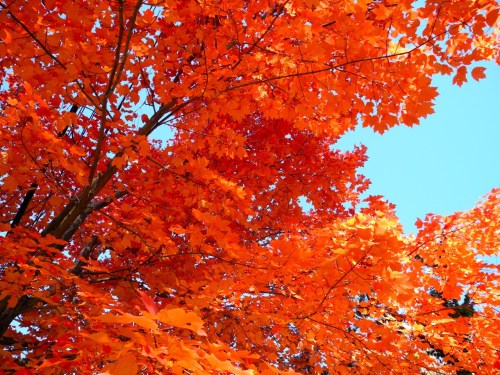…even ‘though it’s mind-boggling to choose among the dozens of varieties grown on the hills outside town. It reminds me of the vast tea plantations I visited in the Cameron Highlands in Indonesia in 1996. Rows and rows of beautifully pruned dark green bushes (always make me think of boxwood), their tender leaves being hand-picked by an army of sari-clad women. These jobs are at a premium and coveted–paying well and providing benefits.
As you may have surmised, I’m skipping back to December 6, right after our trek in Sikkim, hoping to catch up while resting my injured knee. Bear with me as I relate the highlights of the last month of 2010.
Our driver from Gangtok, J. P., met us the last day of the trek and squired us for two days over the winding, pot-holed country roads to visit our last two monasteries, Sangacholing, considered the oldest in Sikkim, which lay amidst thick forested hills opposite the Pemayantse Monastery. All the monasteries we visited on the final days of our trek were like this…way up in the mountains, not open to cars, and reached by banks of stone steps. We were in good shape, however, having climbed many much steeper hills in the previous three weeks.
It took hours on roads not to be believed to get to the outskirts of Darjeeling. At times the switchbacks were so severe that J. P. had to stop and go into reverse, then turn sharply in order to stay on the road. But the scenery was well worth the ride: deep valleys, bamboo forests, and ever-climbing terraces. Finally, Darjeeling appeared on several hills…a bustling, noisy, rather beat-up-looking old hill station from British colonial times. You could see relics of the old mansions and government buildings squeezed between the dilapidated wooden buildings that dotted the hills. Streets wound around and the bazaar was extensive and colorful. Alleyways connected the upper and lower levels, but I found the shrill honking of motorcycles and cars (where do they find these horns?) jarring after about thirty minutes, and begged for mercy. There is still an appalling amount of trash and garbage everywhere, but a truck comes around in the early morning hours and shovels it away, leaving room for the next day’s offering. Stray dogs abound, rummaging through the smelly debris.
To visit Darjeeling you need stamina! Streets go down, down, down and up, up, up. And the climbing didn’t stop when we checked into The Dekeling Hotel, a comfortable haven run by a delightful Tibetan family. It’s nestled into a hill and we were given a sixth floor attic room, reached by climbing innumerable stairs, turning corners, walking through reading and breakfast rooms, and, finally, the laundry. I felt very proud that I found my way back without dropping bread crumbs! Note: this was the first night in three weeks that we’d slept in sheets. It was heavenly.
There is a charming old train from British days that runs from Siliguri to Darjeeling, called the “toy train.” Very popular with tourists. We saw two stations and enjoyed following the small tracks as they wound back and forth from one side of the road to the other. It was funny to see women sitting on the tracks with their goods laid out for sale in front of them. Obviously, they knew the train schedule well.
The day before we left, we arose at 3:30 A.M. and met J. P. to head for Tiger Hill to view the sunrise. This is a tradition and is well worth waiting for hours in the bitter cold. We arrived about two hours early in order to find a parking space. Hundreds of cars soon lined the hill road, and droves of people stood and shivered together to catch the first rays of light. Excitement and expectancy filled the air.
At 6:20 they were rewarded as pale pink streaks crept over the Kangchenjunga range. Where we were standing was an entirely different view and took longer. But what a sight! Way over to the left I could see the white cone of Mt. Everest next to Makalu and Lhotse. This was the first time I’d seen Everest look like what it is…the highest point on earth. It was an emotional moment for me. When I saw it from Kala Pattar in 1987, it was in the distance and did not look so powerful. Close by were the Three Sister, also white with snow. I had last seen them in Nepal in 1999 on the Annapurna trek.
The next day we visited the Himalayan Mountain Institute and The Climbing School, where Tenzing Norgay’s ashes are entombed, and where equipment and clothing used in the historic 1953 Everest expedition with Sir Edmund Hillary and other major climbs were on display. Close by was the Padmajo Naidu Himalayan Zoological Park, where we ogled the tigers, Himalayan wolves, and red panda bears.
So it was off to Siliguri, visiting a tea plantation factory en route, which probably hadn’t changed since British rule. A camera crew was making a documentar and photographing the women as they sat cross-legged on the floor sorting leaves.
I have to say that it was a great experience to take a first class sleeper to Delhi, complete with three meals, tea, and free bottled water. We giggled as we luxuriated in these small excesses. Little did I know just how great they were until I experienced 2nd and 3rd class!
I’m still in Gokarna, happy to have had my mosquito netting installed, and loving to listen to the roar of the Arabian Sea every night. I finally went swimming, lay down in the sun, and didn’t even flinch when a cow walked two feet from my head. He takes his morning and evening constitutional in front of our guest house. It’s the only beef I’ve seen in southern India.






